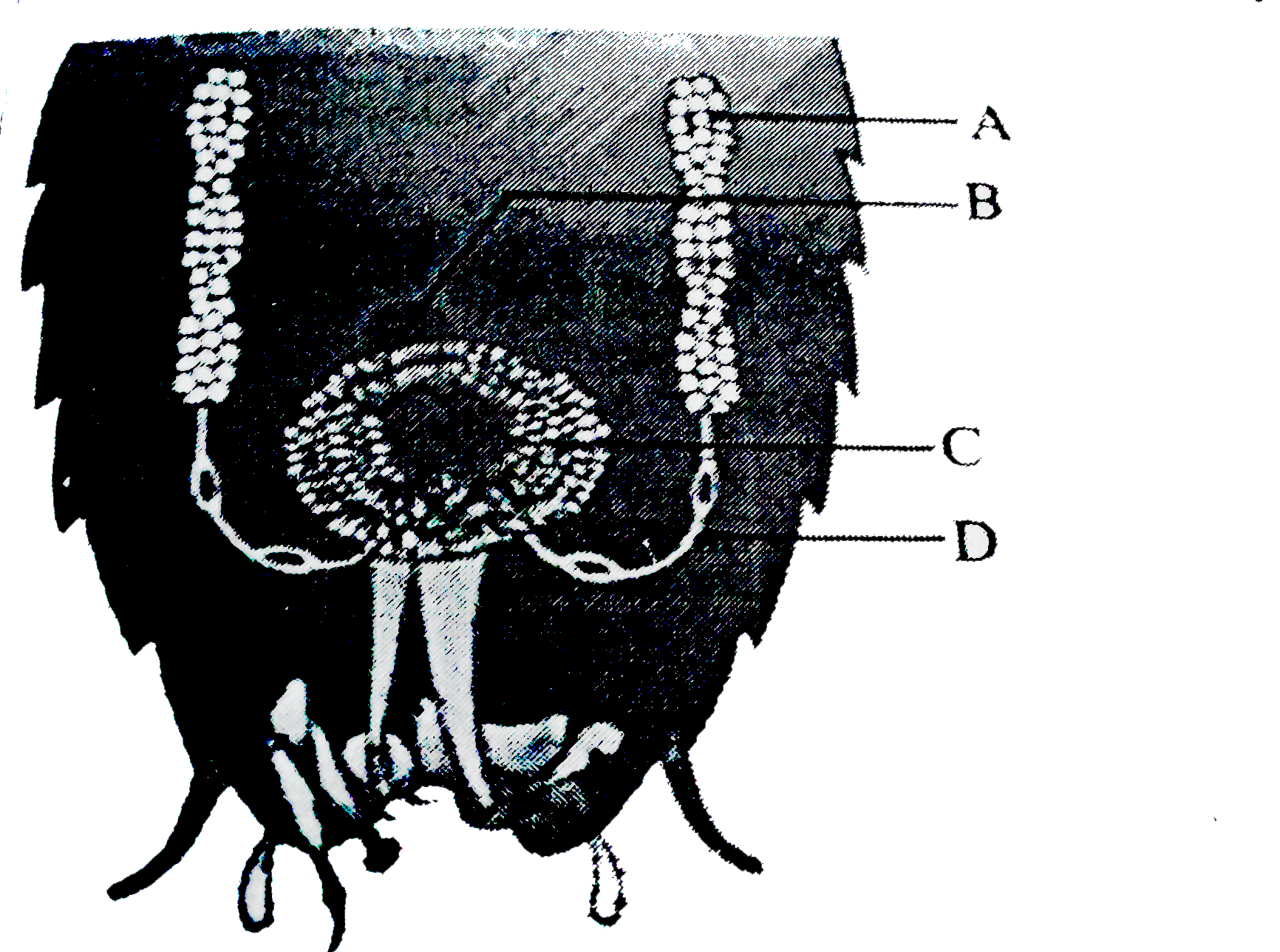In testes , the sperms are formed by :
Interstitial cells
Graafian follicles
Seminiferous tubules
Nephrons
Step-by-Step Solution:
1. Understanding the Question: The question asks where sperm are formed in the testes. We need to identify the correct structure responsible for sperm production.
2. Evaluating the Options:
- Option 1: Interstitial Cells: These cells are responsible for producing hormones like testosterone but are not directly involved in sperm formation.
- Option 2: Graafian Follicles: These are involved in female reproduction, specifically in the maturation and release of oocytes (eggs), not sperm. Therefore, this option is incorrect.
- Option 3: Seminiferous Tubules: These are the specific structures within the testes where sperm production (spermatogenesis) occurs. This is the correct answer.
- Option 4: Nephrons: Nephrons are the functional units of the kidneys and are not related to sperm formation. This option is also incorrect.
3. Conclusion: Based on the evaluation of the options, the correct answer is Option 3: Seminiferous Tubules, as they are the sites of sperm development in the testes.
Final Answer: Sperm are formed by the Seminiferous Tubules in the testes.
---
- Option 1: Interstitial Cells: These cells are responsible for producing hormones like testosterone but are not directly involved in sperm formation.
- Option 2: Graafian Follicles: These are involved in female reproduction, specifically in the maturation and release of oocytes (eggs), not sperm. Therefore, this option is incorrect.
- Option 3: Seminiferous Tubules: These are the specific structures within the testes where sperm production (spermatogenesis) occurs. This is the correct answer.
- Option 4: Nephrons: Nephrons are the functional units of the kidneys and are not related to sperm formation. This option is also incorrect.
Topper's Solved these Questions
- REPRODUCTION IN ORGANISMSBOOK - MODERN PUBLICATIONCHAPTER - REPRODUCTION IN ORGANISMSEXERCISE - CHAPTER PRACTICE TEST (SECTION - B)
4 Videos
- REPRODUCTION IN ORGANISMSBOOK - MODERN PUBLICATIONCHAPTER - REPRODUCTION IN ORGANISMSEXERCISE - CHAPTER PRACTICE TEST (SECTION - C)
3 Videos
- REPRODUCTION IN ORGANISMSBOOK - MODERN PUBLICATIONCHAPTER - REPRODUCTION IN ORGANISMSEXERCISE - COMPETITION FILE OBJECTIVE TYPE QUESTIONS (ASSERTION - REASON TYPE QUESTIONS :)
11 Videos
- PRINCIPLES OF INHERITANCE AND VARIATIONBOOK - MODERN PUBLICATIONCHAPTER - PRINCIPLES OF INHERITANCE AND VARIATIONEXERCISE - CHAPTER PRACTICE TEST section-e(Long answer type question)
1 Videos
- REPRODUCTIVE HEALTH BOOK - MODERN PUBLICATIONCHAPTER - REPRODUCTIVE HEALTH EXERCISE - CHAPTER PRACTICE TEST (SECTION D (LONG ANSWER QUESTION))
2 Videos
Similar Questions
Knowledge Check
Assertion: Both bryophytes and pteridophytes contain well-developed antheridia.
Reason: Biflagellate sperms are formed by their antheridia.AIf both the assertion and the reason are true and the reason is a correct explanation of the assertionBIf both assertion and reason are true but the reason is not a correct explanation of the assertionCIf the assertion is true but the reason is falseDIf both the assertion and reason are falseIn male cockroach, the sperms are stored in the seminal vesicles and are glued together in the form of bundles called
APhallic glandBSpermatophoresCSpermathecaeDSpermatogoniaAfter a sperm has penetrated an ovum , the entry of other sperms is prevented by :
ACondensation of yolkBFormation of pigment coatCDevelopment of vitelline membraneDDevelopment of fertilization membrane
Explain how sperms are formed from testes and transported to urinogenital duct.
View SolutionExplain how sperms are formed from testes and transported to urinogenital duct.
View SolutionThe acrosome of the sperm is formed from .............
View SolutionHow many sperms are formed by one primary spermatocyte ?
View SolutionAxial filament of sperm is formed by
View Solution

